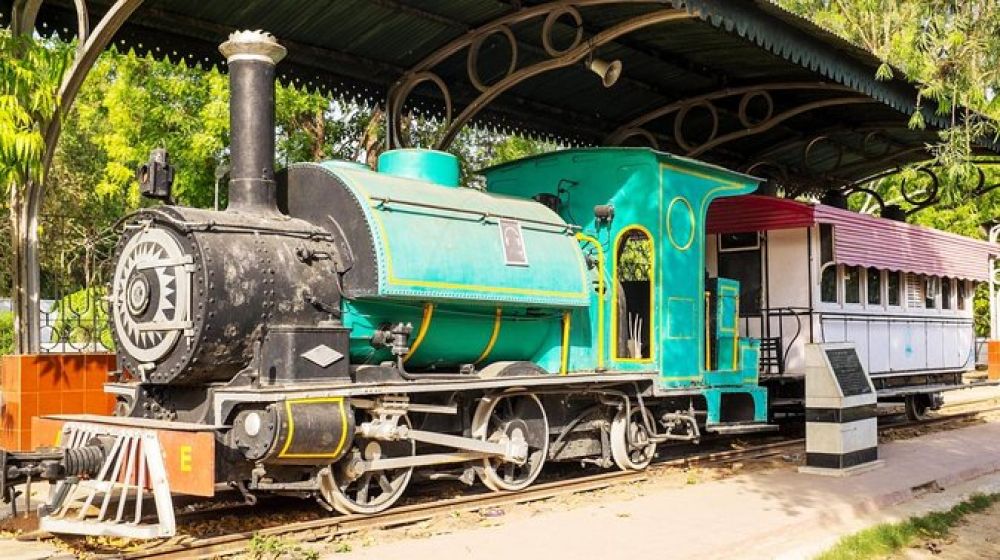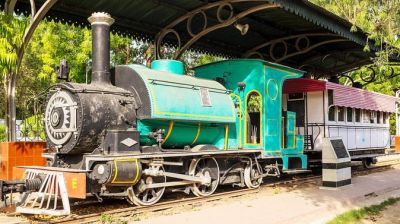

Experience the grandeur of the bygone era with a short trip aboard a vintage steam locomotive. This ride takes you on a circuit through the museum, letting you soak in the sights of historical rail exhibits. The rhythmic chug of the engine and the whistle of the steam provide an immersive journey into the past, where the steam locomotive was the king of the rails. Visitors get an up-close view of the engineering marvels and the meticulous design that powered these giants. The ride is accompanied by informative commentary, enhancing the educational aspect of this fun experience. It’s a perfect activity for railway enthusiasts and anyone intrigued by industrial history.
The Toy Train Ride is a family-friendly activity that's ideal for visitors with children. As the train chugs along its designated track, it passes by various exhibits, giving a miniature tour of the museum grounds. It's a delightful way for kids and adults alike to learn about railways in a fun and engaging setting. The ride also offers numerous photo opportunities, both with the train itself and the various artifacts and locomotives on display. An entertaining and educational commentary plays throughout the journey, adding context to the sights and making it an edifying experience for all ages.
The Rail Garden at the National Rail Museum is an open-air exhibit featuring meticulously landscaped gardens interwoven with railway exhibits. Visitors can take a leisurely stroll among model trains and real-life decommissioned rolling stock. This section of the museum tells a quieter story of the railways and provides a peaceful escape from the bustle of the city. Benches are scattered throughout the grounds, allowing guests to relax and take in their surroundings. Placards provide background information on each display, and the variety of flora adds a natural beauty to the metallic sheen of the trains.
In the Indoor Gallery, visitors are guided through an extensive collection of railway artifacts, historical photographs, documents, and interactive exhibits. The displays are curated to illustrate the evolution of the Indian Railways and the technological advancements over time. Detailed models of trains, tracks, and signaling equipment help explain the complexities of railway operations. The gallery also celebrates the contributions of various individuals who played pivotal roles in the development of India's rail network. Multimedia presentations and simulations make the tour an engaging experience for visitors of all ages, with opportunities to learn through participation.
The Heritage Walk within the National Rail Museum premises is a journey through the milestones of Indian Railway history. As you follow the guided path, you encounter life-sized exhibits of vintage carriages, locomotives, and royal saloons that are part of India's rich railway heritage. The walk tells tales of the bygone era, bringing to life the luxury, engineering, and challenges of historic train travel. With each step, visitors gain insights into how the railways contributed to the cultural and economic development of the nation. The beautifully restored locomotives are not just static displays but stories cast in iron and steel.
For a cutting-edge look at railway technology, the 3D Virtual Reality experience at the National Rail Museum is a must-try activity. Donning VR headsets, visitors are transported into immersive simulations that explore various aspects of train travel and operations. The experiences range from thrilling train journeys through diverse landscapes to educational modules about railway safety and construction. Both entertaining and enlightening, this activity bridges the past and future of rail travel, allowing guests to understand the complex systems that run one of the world's largest rail networks without leaving the comfort of the museum.
The Scale Model Display showcases exquisitely crafted miniature trains and railway stations, providing a detailed bird's-eye view of the intricate railway systems. These models are not only a testament to the craftsmanship of the model makers but also serve as educational tools, helping to explain complex railway operations in a visually appealing and accessible format. For hobbyists and model train collectors, this activity is a source of inspiration and admiration. The exhibit captures the imagination of visitors, encouraging them to observe the minor details and appreciate the scale of real-world rail networks.
At the Railway Workshop Demonstrations, visitors get a firsthand look at the maintenance and restoration processes of historic trains. These demonstrations provide unique insights into the mechanical and technical expertise required to keep the museum's fleet in pristine condition. Specialists guide guests through the procedures, tools, and techniques used in the preservation of these mechanical marvels. This hands-on learning experience is especially intriguing for those interested in engineering and mechanics, and it underscores the continued relevance of traditional skills in the age of modern technology.
Simulated Train Driving puts you in the driver's seat, offering a thrilling faux control over a virtual train. This simulation allows visitors to experience what it's like to operate a train, complete with realistic controls and responses. The interactive dashboard presents challenges and scenarios that real train drivers face, providing an educational and engaging activity. It's an exciting way for enthusiasts to get a glimpse of the responsibilities and skills required to manage a locomotive. Although the simulator is not an exact replica of a train's cockpit, it provides a reasonable approximation that is both fun and informative.
The Photography Exhibition at the National Rail Museum is a visual treat that captures the essence of Indian Railways through a collection of stunning photographs. These images, taken by both professional photographers and rail enthusiasts, depict the diversity of India's landscapes, the unique railway architecture, and the various communities that thrive along the railway lines. The exhibition tells a powerful story of connection, highlighting the way trains bridge distances and cultures across the country. Visitors can leisurely explore the photographs, gaining a deeper appreciation for the aesthetic and societal impact of the railway system.
